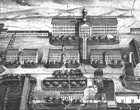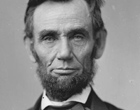If the 1850s did not foster an economic crisis between a modern North and a backward South, then, and if the political system contained many countervailing forces, what conditions in that decade created conditions in which the Civil War eventually combusted? Ironically, it was some of the very developments that tied the country together that made it more likely to break along regional lines. The spread of railroads, telegraphs, and newspapers transformed conflicts into national media events. Old-fashioned political speeches, in which local leaders played to their local constituents, suddenly became controversies all across the country. News of events such as Bleeding Kansas or John Brown's raid exploded before readers of newspapers in a matter of hours--the news speeding across telegraph lines only recently strung. Newspapers boomed in the 1850s, virtually all of them sponsored by political parties, feeding a sense of outrage against their opponents across town, across state, or across the Mason-Dixon Line. Advocates of every party caricatured their opponents and then believed the caricature.
With slavery never more profitable, slaveholders and secessionists did not believe the North or Europe would dare threaten their own prosperity by defying the South. With their populations burgeoning and their towns and farms blossoming, Northerners did not believe the South would challenge the Union. People on both sides called each other's bluff. Impatient with compromise, full of confidence in their abilities to stand alone, leaders and voters challenged the courage and resolve of the other side.
No single change turned these years into the pre-war years. Rather, the concatenation of long-term processes and unexpected events created the conditions that led to war. The interplay between long-term conflict over slavery, medium-term developments in party politics, and immediate passionate concern over John Brown proved more volatile than any of these conditions alone. American men surveyed the situation, read raging party newspapers with which they already agreed, and then faced dichotomous choices that left no room for compromise. They acted out of a compelling situational logic that made perfect sense to them at the time but that led to results they did not seek.
The 1850s seem a prelude to war only in retrospect. Americans expected, even welcomed, a confrontation with one another over the consequences of slavery to white people because they believed confrontation would deliver resolution to the uncertainties of the preceding decade. They could not know that they were bringing on a war that would kill well over half a million of their people and that would free four million more. They did not know that they were living on the eve of the American Civil War until it was too late.
This essay is taken from The The Civil War published by the National Park Service and Eastern National. This richly illustrated handbook is available in many national park bookstores or may be purchased online from Eastern at www.eparks.com/store




